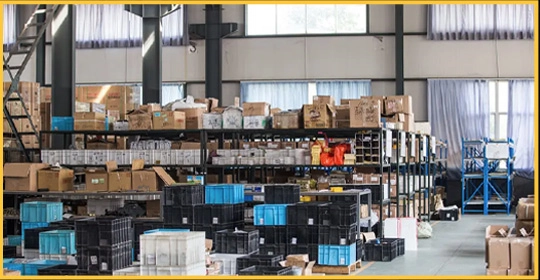
-
 Afrikaans
Afrikaans -
 Albanian
Albanian -
 Amharic
Amharic -
 Arabic
Arabic -
 Armenian
Armenian -
 Azerbaijani
Azerbaijani -
 Basque
Basque -
 Belarusian
Belarusian -
 Bengali
Bengali -
 Bosnian
Bosnian -
 Bulgarian
Bulgarian -
 Catalan
Catalan -
 Cebuano
Cebuano -
 Corsican
Corsican -
 Croatian
Croatian -
 Czech
Czech -
 Danish
Danish -
 Dutch
Dutch -
 English
English -
 Esperanto
Esperanto -
 Estonian
Estonian -
 Finnish
Finnish -
 French
French -
 Frisian
Frisian -
 Galician
Galician -
 Georgian
Georgian -
 German
German -
 Greek
Greek -
 Gujarati
Gujarati -
 Haitian Creole
Haitian Creole -
 hausa
hausa -
 hawaiian
hawaiian -
 Hebrew
Hebrew -
 Hindi
Hindi -
 Miao
Miao -
 Hungarian
Hungarian -
 Icelandic
Icelandic -
 igbo
igbo -
 Indonesian
Indonesian -
 irish
irish -
 Italian
Italian -
 Japanese
Japanese -
 Javanese
Javanese -
 Kannada
Kannada -
 kazakh
kazakh -
 Khmer
Khmer -
 Rwandese
Rwandese -
 Korean
Korean -
 Kurdish
Kurdish -
 Kyrgyz
Kyrgyz -
 Lao
Lao -
 Latin
Latin -
 Latvian
Latvian -
 Lithuanian
Lithuanian -
 Luxembourgish
Luxembourgish -
 Macedonian
Macedonian -
 Malgashi
Malgashi -
 Malay
Malay -
 Malayalam
Malayalam -
 Maltese
Maltese -
 Maori
Maori -
 Marathi
Marathi -
 Mongolian
Mongolian -
 Myanmar
Myanmar -
 Nepali
Nepali -
 Norwegian
Norwegian -
 Norwegian
Norwegian -
 Occitan
Occitan -
 Pashto
Pashto -
 Persian
Persian -
 Polish
Polish -
 Portuguese
Portuguese -
 Punjabi
Punjabi -
 Romanian
Romanian -
 Russian
Russian -
 Samoan
Samoan -
 Scottish Gaelic
Scottish Gaelic -
 Serbian
Serbian -
 Sesotho
Sesotho -
 Shona
Shona -
 Sindhi
Sindhi -
 Sinhala
Sinhala -
 Slovak
Slovak -
 Slovenian
Slovenian -
 Somali
Somali -
 Spanish
Spanish -
 Sundanese
Sundanese -
 Swahili
Swahili -
 Swedish
Swedish -
 Tagalog
Tagalog -
 Tajik
Tajik -
 Tamil
Tamil -
 Tatar
Tatar -
 Telugu
Telugu -
 Thai
Thai -
 Turkish
Turkish -
 Turkmen
Turkmen -
 Ukrainian
Ukrainian -
 Urdu
Urdu -
 Uighur
Uighur -
 Uzbek
Uzbek -
 Vietnamese
Vietnamese -
 Welsh
Welsh -
 Bantu
Bantu -
 Yiddish
Yiddish -
 Yoruba
Yoruba -
 Zulu
Zulu


அக் . 20, 2024 10:38 Back to list
push rod pull rod
The Dynamics of Push Rods and Pull Rods in Mechanical Systems
In the realm of mechanical engineering, the terms push rod and pull rod refer to critical components used in a variety of systems to transmit force and motion. Understanding how these rods function not only provides insights into their applications but also reveals their importance in the design of efficient machinery and mechanical devices.
Push Rods Mechanisms of Force Transmission
A push rod is a component that primarily transmits force in a linear direction. Typically employed in mechanisms where a force must be applied to an object or surface, push rods are found in a variety of systems, from automobile engines to valve actuators. In an internal combustion engine, for example, push rods are used to transfer the motion from the camshaft to the rocker arms, which then open and close the engine’s valves. This process is crucial for the engine’s performance, allowing it to breathe and operate efficiently.
The construction of a push rod involves a cylindrical shape capable of withstanding significant axial loads while maintaining structural integrity. The material selected for push rods is often lightweight yet strong, typically using aluminum alloys or high-carbon steel to balance strength and weight, which is especially important in automotive applications.
Pull Rods Harnessing Tensile Strength
Conversely, a pull rod works by using tensile strength to transmit force. These rods are designed to handle forces that tend to stretch them rather than compress them. Pull rods are often found in aircraft control systems, car suspensions, and various hoisting mechanisms. In a helicopter, for instance, pull rods are instrumental in controlling the pitch of the rotor blades, allowing the pilot to steer the aircraft effectively.
push rod pull rod

One of the key aspects of pull rod design is ensuring that they can endure the forces applied without deformation or failure. The materials used for pull rods must exhibit high tensile strength, which is why materials such as high-strength stainless steel or carbon fiber composites are often used. While push rods are primarily focused on compression, pull rods must be designed to minimize elongation over time.
Dynamic Applications and Pairing Systems
In many mechanical systems, push rods and pull rods work in tandem, transforming and directing motion in cohesive ways. For example, in a typical suspension system of an automobile, both types of rods may be used push rods to absorb shocks and pull rods to adjust the angle and height of the vehicle’s body relative to its axle, optimizing ride quality and handling performance.
The interplay between push rods and pull rods highlights the principles of mechanics, including tension and compression. Engineers must account for these forces during the design phase to ensure that each component performs its function effectively without exceeding its material limits. This often involves computational simulations and rigorous testing to predict how each rod behaves under various loads and conditions.
Conclusion Engineering Fundamentals in Everyday Life
In summary, push rods and pull rods are fundamental components in mechanical engineering that facilitate force transmission. Their distinct functions—compression for push rods and tension for pull rods—enable a variety of applications across numerous fields, including automotive, aerospace, and industrial machinery. As technology advances and engineering demands evolve, the designs and materials used for these components will continue to improve, ensuring reliability and performance in increasingly complex systems. The study of these rods exemplifies the profound intersection of physics, materials science, and engineering design, underscoring their critical role in modern technology.
Latest news
Understanding Earth Wiring and Grounding: Essential Components for Electrical Safety
NewsAug.15,2025
The Ultimate Guide to Cable Pulling Tools and Equipment for Efficient Installations
NewsAug.15,2025
Streamline Your Projects with Advanced Cable Pulling Equipment
NewsAug.15,2025
Simplify Cable Installation with Advanced Cable Pulling Tools and Equipment
NewsAug.15,2025
Essential Guide to Link Sticks and Hot Sticks for Electrical Safety and Line Work
NewsAug.15,2025
Efficient Solutions for Cable Installation: Your Guide to Cable Pulling Winches and Equipment
NewsAug.15,2025








